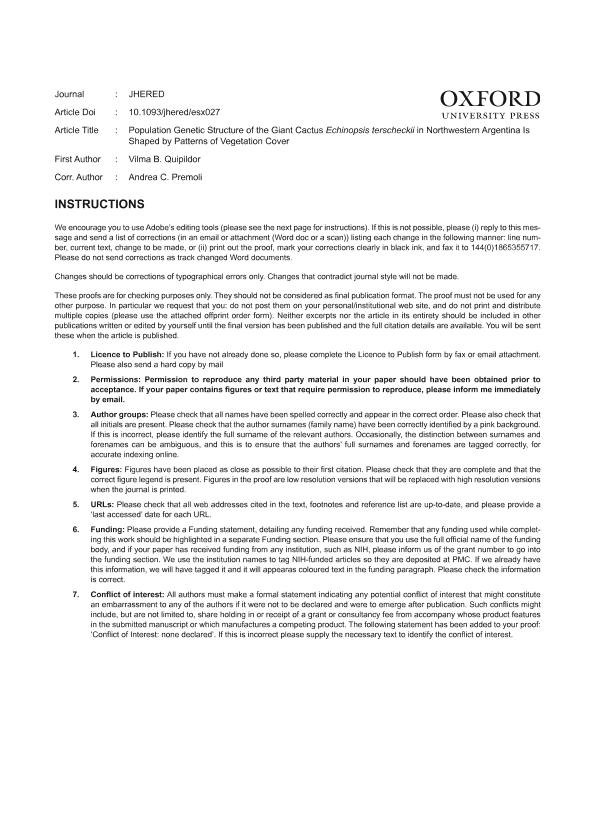Artículo
Population Genetic Structure of the Giant Cactus Echinopsis terscheckii in Northwestern Argentina Is Shaped by Patterns of Vegetation Cover
Fecha de publicación:
07/2017
Editorial:
Oxford Univ Press Inc
Revista:
Journal of Heredity
ISSN:
0022-1503
Idioma:
Inglés
Tipo de recurso:
Artículo publicado
Clasificación temática:
Resumen
Species inhabiting drylands commonly depend on the surrounding vegetation for recruitment under stress, while competition may affect populations in moister environments. Our objective was to analyze how different climates and vegetation affect the fine-scale spatial genetic structure (SGS) of the columnar cactus Echinopsis terscheckii. At 4 sites, we estimated vegetation cover by digitized patches and the normalized difference vegetation index (NDVI). We mapped 30 individuals per population and collected tissue for isozyme electrophoresis using 15 putative loci. Spatial autocorrelation between all possible genotype pairs and the number of genetically homogeneous groups and families were calculated for each population. Greater cover (66%) and average NDVI values were detected in the most humid habitat that consisted of fewer, larger, and more dispersed vegetation patches. All populations were genetically diverse and showed significant SGS. Positive correlations were found between the distance at which maximum autocorrelation and kinship values were reached and vegetation area and patch size. Also higher NDVI values were associated with lower number of patches. Populations exposed to higher precipitation and vegetation cover consisted of sparse individuals that clustered at larger distances whereas vegetation patches in arid climates produced groups of closely related genotypes at small distances. These results support the stress-gradient genetic hypothesis. Under water stress, facilitation promotes establishment underneath patchy vegetation resulting in fine-scale family structure. In moister xerophilous forests, competition for resources, that is, light, results in sparse individuals and thus coarse-scale neighborhoods. This information can guide conservation and/or restoration efforts, such as the spatial scale to be considered in germplasm collection.
Archivos asociados
Licencia
Identificadores
Colecciones
Articulos(INIBIOMA)
Articulos de INST. DE INVEST.EN BIODIVERSIDAD Y MEDIOAMBIENTE
Articulos de INST. DE INVEST.EN BIODIVERSIDAD Y MEDIOAMBIENTE
Citación
Quipildor, Vilma; Mathiasen, Paula; Premoli Il'grande, Andrea Cecilia; Population Genetic Structure of the Giant Cactus Echinopsis terscheckii in Northwestern Argentina Is Shaped by Patterns of Vegetation Cover; Oxford Univ Press Inc; Journal of Heredity; 108; 5; 7-2017; 469-478
Compartir
Altmétricas




